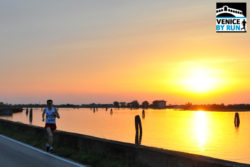 Urban running in Venice: dealing with its unique paved ways
Urban running in Venice: dealing with its unique paved ways
Running through the streets of Venice you can admire the splendor of the buildings, the special features of the chimneys and the elegance of the churches, but you have also to pay attention on what there’s under your feet…
The Venetians built their city in a particular environment, a lagoon of shallow water.
For this reason, from the origins, they worked hard to make a living place this difficult territory: they built the ground on which the buildings had to be based, consolidating the floating land and defending them from the tides. The paving is a very serious matter in Venice: the stones take away both the humidity of the Lagoon and the heat of the summer.
The ground of the Venetian calli and squares is largely composed by paving stones called masegni, large rectangular trachyte stones made in the hills in the southwest of Padua.
The trachyte is an optimal stone for paving, both for its aesthetic qualities and for its wear-resistant efficiency against the typical saltiness of the Lagoon.
The variety of colors of trachite contributes greatly to the charm of Venice and it perfectly matches with the extremely varied architectural styles that characterize this city as well as with the colors of its plaster, its bricks and why not, its algae and mold brackish.
The paving stones were used to pave Venice since the first half of the XVIII Century. In ancient times the streets of the city were dirty floor and until the XVI Century in the largest calli the transit of the horse carriages was allowed.
During the Venice Night Trail you will run mainly on a pavement of trachyte stones, except for the first short part from St. Basilio to the Calatrava bridge where the ground is paved.
The ground has important characteristics that may help or complicate your race.
The tarmac surface has the undeniable advantage of the regularity and its rigidity is particularly suitable for the runner who focuses on the speed and on the technique instead of avoiding potholes or bumps. For the beginner, this kind of ground has the advantage to be an easier surface rather than other grounds.
On the contrary, the trachyte puts our joints to a high level of “stress” and for this reason we recommend to use protective shoes with a soft sole.
The paving stones have become rough and damaged by time and it can cause some difficulties, especially in poor lighting conditions … so be careful where you put your feet!







